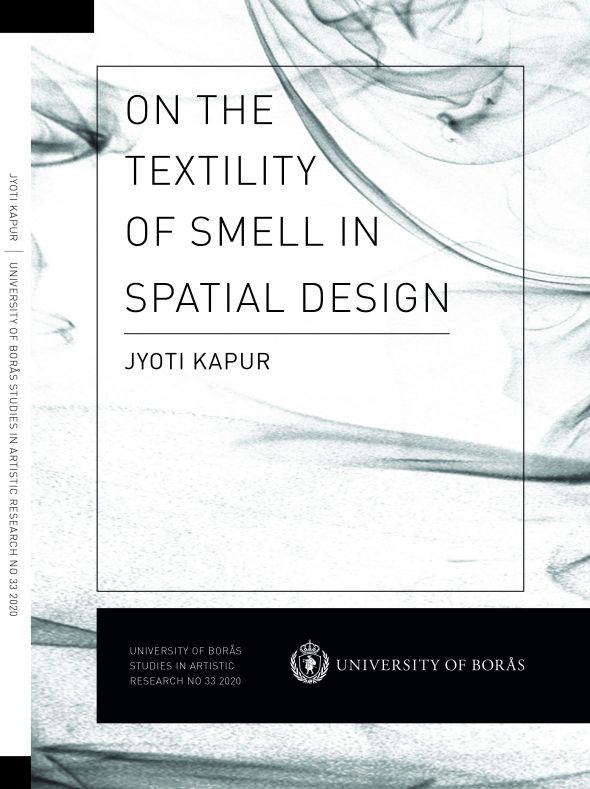Smart Textiles Design Lab Blog at The Swedish School of Textiles
On the textility of smell in spatial design_PhD thesis
Jyoti Kapur, PhD student ArcintexETN(www.arcintexetn.eu) and The Swedish School of Textiles, University of Borås

Abstract
The ocular-centric approach predominant in the field of design, particularly textile and spatial design, focuses on visual aesthetics and visually mediated interactions. Whereas the non-visual materialities of a space, such as smells, are ignored in the design process, meaning that interior spaces with homogenously odourless environments lack interactions with the olfactory. However, multi-sensorial experiences are crucial to creating a holistic perception of an environment.The aim of this thesis is to investigate smell as a design material for spatial design. This research has been carried out using experimental design research methods, with the conceptual framework connecting smell as a design material to textiles and spatial and interaction design. Addition, modulation and subtraction of smells through textile surfaces and micro-climatic spatial zones have been investigated. In- teractions with smells were explored through different modes of activation and dispersion of smells on two different scales; spatially near to body and far from body. The research findings show that atmospheric parameters play an important role in the detectability of smells, in that air flow carries smells and distributes them in a space. Humidity holds smell molecules in the air, and at higher temperatures smell molecules are extremely volatile and dynamic in their movements. Textiles have demonstrated to be good absorber of smells, and are breathable materials with regard to designing with plants and synthetic micro-encapsulated smells to create an olfactive dimension in spaces. These results have an implication for the design of spatial olfactive diversity and olfactory interactions, in that it is possible to disperse smells that are designed to transition from discrete to ambient,or vice versa. Interior textiles can be designed with the expressions of smells that add an olfactive dimension in addition to colours, patterns, and textures. The research presented in this thesis opens up for further interdisciplinary research with regard to developing the novel material systems proposed in this thesis – smell absorbers, dividers, and reflectors– which are responsive to existing smells and atmospheric parameters. Olfactory interac- tions have important applications from two perspectives: firstly, in relation to subjective and individual connections to people, places, and events; secondly, with regard to provid- ing information about the near environment that is comprehended through the olfactory, in addition to being perceived by the other senses. Therefore, spatial olfactory interactions are essential to (re)connect human to the environment in which they live and work. These interactions in the real physical world are slow and analogue in nature, in comparison to fast digital lifestyles; smells can improve feelings of social connectedness, improving wellbeing.
Place, publisher, year, edition, pages
Borås: Högskolan i Borås, 2020.
Series
University of Borås studies in artistic research ; 33
December 17, 2020 | Filed under Dissertations, News, Publications.

The Swedish School of Textiles
All content © 2025 by Smart Textiles Design Lab Blog